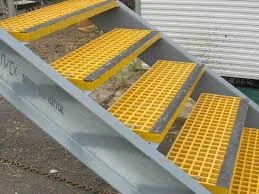
-
 Afrikaans
Afrikaans -
 Albanian
Albanian -
 Amharic
Amharic -
 Arabic
Arabic -
 Armenian
Armenian -
 Azerbaijani
Azerbaijani -
 Basque
Basque -
 Belarusian
Belarusian -
 Bengali
Bengali -
 Bosnian
Bosnian -
 Bulgarian
Bulgarian -
 Catalan
Catalan -
 Cebuano
Cebuano -
 China
China -
 China (Taiwan)
China (Taiwan) -
 Corsican
Corsican -
 Croatian
Croatian -
 Czech
Czech -
 Danish
Danish -
 Dutch
Dutch -
 English
English -
 Esperanto
Esperanto -
 Estonian
Estonian -
 Finnish
Finnish -
 French
French -
 Frisian
Frisian -
 Galician
Galician -
 Georgian
Georgian -
 German
German -
 Greek
Greek -
 Gujarati
Gujarati -
 Haitian Creole
Haitian Creole -
 hausa
hausa -
 hawaiian
hawaiian -
 Hebrew
Hebrew -
 Hindi
Hindi -
 Miao
Miao -
 Hungarian
Hungarian -
 Icelandic
Icelandic -
 igbo
igbo -
 Indonesian
Indonesian -
 irish
irish -
 Italian
Italian -
 Japanese
Japanese -
 Javanese
Javanese -
 Kannada
Kannada -
 kazakh
kazakh -
 Khmer
Khmer -
 Rwandese
Rwandese -
 Korean
Korean -
 Kurdish
Kurdish -
 Kyrgyz
Kyrgyz -
 Lao
Lao -
 Latin
Latin -
 Latvian
Latvian -
 Lithuanian
Lithuanian -
 Luxembourgish
Luxembourgish -
 Macedonian
Macedonian -
 Malgashi
Malgashi -
 Malay
Malay -
 Malayalam
Malayalam -
 Maltese
Maltese -
 Maori
Maori -
 Marathi
Marathi -
 Mongolian
Mongolian -
 Myanmar
Myanmar -
 Nepali
Nepali -
 Norwegian
Norwegian -
 Norwegian
Norwegian -
 Occitan
Occitan -
 Pashto
Pashto -
 Persian
Persian -
 Polish
Polish -
 Portuguese
Portuguese -
 Punjabi
Punjabi -
 Romanian
Romanian -
 Russian
Russian -
 Samoan
Samoan -
 Scottish Gaelic
Scottish Gaelic -
 Serbian
Serbian -
 Sesotho
Sesotho -
 Shona
Shona -
 Sindhi
Sindhi -
 Sinhala
Sinhala -
 Slovak
Slovak -
 Slovenian
Slovenian -
 Somali
Somali -
 Spanish
Spanish -
 Sundanese
Sundanese -
 Swahili
Swahili -
 Swedish
Swedish -
 Tagalog
Tagalog -
 Tajik
Tajik -
 Tamil
Tamil -
 Tatar
Tatar -
 Telugu
Telugu -
 Thai
Thai -
 Turkish
Turkish -
 Turkmen
Turkmen -
 Ukrainian
Ukrainian -
 Urdu
Urdu -
 Uighur
Uighur -
 Uzbek
Uzbek -
 Vietnamese
Vietnamese -
 Welsh
Welsh -
 Bantu
Bantu -
 Yiddish
Yiddish -
 Yoruba
Yoruba -
 Zulu
Zulu
Tailored FRP Fittings for Enhanced Performance and Versatility in Applications
Customized FRP Fittings A Comprehensive Approach to Enhanced Performance
In today’s world, industries are constantly seeking innovative materials and solutions that can withstand the rigors of various applications. One such material that has gained traction is Fiber Reinforced Plastics (FRP). Known for its impressive strength-to-weight ratio, corrosion resistance, and durability, FRP is increasingly being used across sectors such as construction, automotive, aerospace, and marine. While standard FRP products serve many purposes, the demand for customized FRP fittings has surged, driven by the need for tailored solutions that meet specific operational demands.
The Importance of Customization in FRP Fittings
Customized FRP fittings are essential for industries where standard fittings may not adequately fulfill requirements. Whether it's for piping systems, ductwork, or structural applications, the ability to design and manufacture FRP fittings that cater specifically to project specifications can significantly enhance performance and longevity.
For instance, in the chemical processing industry, it is critical to consider the specific chemicals being handled, as well as factors like temperature and pressure. Customized FRP fittings can be engineered to withstand aggressive environmental conditions, thus preventing leaks or failures that could lead to costly downtime and safety hazards. Custom designs can also accommodate unique geometries, allowing for seamless integration into existing systems and improving overall efficiency.
Materials and Manufacturing Process
The production of customized FRP fittings often utilizes various resins and reinforcement materials that can be tailored for specific applications. Epoxy, vinyl ester, and polyester resins are common options, each offering distinct benefits such as enhanced thermal resistance or improved chemical compatibility. Similarly, the choice of fibers – which may include glass, carbon, or aramid – can impact the strength, stiffness, and weight of the finished product.
The manufacturing process for FRP fittings typically involves advanced technologies such as filament winding, pultrusion, or hand lay-up techniques. These methods allow for the creation of high-quality, durable components that can be custom-designed to meet the precise dimensions and specifications outlined by engineers. With the use of Computer-Aided Design (CAD) software, manufacturers can visualize and modify designs before production, ensuring that the final product meets the necessary standards and requirements.
frp customized fittings

Benefits of Using Customized FRP Fittings
1. Enhanced Performance Customized fittings can significantly improve the functionality of a system. By designing fittings that fit operational needs precisely, organizations can experience fewer failures and reduced maintenance costs.
2. Cost Efficiency While there may be an initial investment in creating specialized FRP fittings, the long-term savings realized from increased durability and reduced replacement rates can make customized solutions more economical over time.
3. Improved Safety In industries where safety is paramount, custom FRP fittings can be engineered to meet specific codes and regulations, minimizing the risk of malfunctions and enhancing workplace safety.
4. Eco-friendly Options Many manufacturers are now focusing on sustainability by utilizing eco-friendly resins and processes. Customized FRP fittings can be developed with environmental responsibility in mind, contributing to greener industrial practices.
Conclusion
In conclusion, customized FRP fittings represent a significant advancement in material technology that offers tailored solutions to meet specific industry needs. As industries continue to evolve, the ability to adapt and innovate through customization is crucial for maintaining operational efficiency and ensuring safety. By investing in bespoke FRP solutions, businesses can harness the full potential of this versatile material, ultimately leading to enhanced performance and sustainability in a wide array of applications. As we move forward, the demand for customization in the FRP domain is likely to grow, further driving innovation and technological advancement.









